#biodiveristy
Photo


Histioteuthis heteropsis or Strawberry Squid
The Strawberry Squid gets its name from its red color and photophores (the little “spots” you see). The photophores emit light, allowing the squid to communicate, lure prey, attract a mate, and confuse and hide from predators. This squid has also been nicknamed the Cockeyed Squid because one if its eyes tend to be larger than the other. This is to better deal with the varying light levels it will encounter as it swims through the twilight zone.
#marine life#marine creatures#marine biology#marine ecology#marine ecosystem#sea#sea life#sea animals#sea creatures#squid#squids#strawberry squid#cephalopods#cockeyed squid#twilight zone#animals#biodiveristy#ecosystem#earth#nature#animal facts#fun facts#true facts#cute animals#sea animal#ocean life#oceans#ocean#deep sea#deep sea creatures
250 notes
·
View notes
Video
youtube
Techno-optimists protecting rainforests with open-source satellite maps.
The collaborative project, called MapBiomas, uses satellite imagery to track and report human changes to ecosystems. All of its data publicly available, MapBiomas is fighting climate change, environmental destruction, and crime.
#youtube#amazon#amazon rainforest#environment#climate change#deforestation#conservation#satellite images#opensource#brazil#biodiveristy#environmentalism#rainforest#freethink
24 notes
·
View notes
Text
Ecuador referendum halts oil extraction in Yasuní National Park
Yesterday, Ecuador voted to halt all future oil drilling in a sensitive protected area known for its fragile rainforest ecosystem and isolated Indigenous communities.
Millions of people participated in a nationwide referendum to determine whether crude oil should remain in the ground indefinitely at a site inside Yasuní National Park in Ecuador’s eastern Amazon.
More than 5.2 million people voted in favor compared with 3.6 million against, solidifying protections for Indigenous communities living in voluntary isolation.
The referendum took place alongside presidential and legislative elections as well as a referendum on halting mining in the Chocó Andino de Pichincha. That referendum received nearly 70% support from voters.
Read full article here: https://news.mongabay.com/2023/08/ecuador-referendum-halts-oil-extraction-in-yasuni-national-park/
0 notes
Video
Gray Wolf by Coyoty
Via Flickr:
Canis lupus. At the Beardsley Zoo in Bridgeport, CT.
#Beardsley Zoo#Bridgeport#Connecticut#CT#zoo#nature#wolf#gray wolf#animal#Canis lupus#canine#fauna#predator#carnivore#mammal#wild#life#wildlife#biodiveristy#New England#Animal Planet#flickr
0 notes
Text
UNIT 1: Launching into Nature Interpretation
I have had a slightly unorthodox journey to becoming interested in nature, as the concept of studying nature in university has only recently occurred to me. For context, I grew up in the Waterloo Region which is quite a developed urban area; so there was not much opportunity for exploring vast forests or serene lakes. The concept of studying nature in school or even going for a hike wasn't even a thought in my head for the first 19 years of my life. I began university in Biomedical Sciences at a different institution (which was a very intense human-centric program with no biodiversity or environmental biology exposure), but transferred to the University of Guelph during my first year. At UoG, I had to take a required class, BIOL*1070 Discovering Biodiveristy… and boy did I discover biovideristy!
In BIOL*1070, I was lumped in a group with a bunch of biomed kids who HATED the class and just wanted to learn “useful biology,” that’s when I realized I didn't hate the class at all, it was actually my favourite first-year course I had taken! It was the other student’s closed-mindedness that made me realize how important the class was and appreciate the content so much more. I also realized that solely doing biology courses about anatomy, molecular biology, genetics and physiology made me absolutely miserable, and I had this untapped passion for ecology, evolution, environmental biology, and geography. I switched my major to Biological Sciences so I could experience the best of both worlds and have more flexibility to explore this side of biology that I had no exposure to in high school or my first year of university. Unfortunately, I think it is a common experience for students to be pigeonholed toward the medical field and human biology. I am very happy that I was forced to take BIOL*1070, I would never have done it as an elective and I wouldn't be here in ENVS*3000 or have taken half the classes on my transcript.
Additionally, BIOL*1070 also opened doors to new hobbies as I became a frequent hiker and trail runner. In BIOL*1070, we had to go on 5 nature walks for an assignment, which at the time I thought was super annoying and inconvenient but I ended up falling in love with the fresh air and sunshine. Shortly after, I started working full-time in an office and going on daily hikes and runs which absolutely saved my mental and physical health. I am so grateful I discovered this hobby before my work-term because I don't know what I would have done without it! Sitting at a computer in a windowless cubical for 8 hours a day would have driven me insane if I didn't have nature as an outlet. It is hard to believe that just 3 months before my trail obsession I had zero interest in nature. This newfound appreciation for nature has even impacted the vacations I have taken with camping trips and road trips to remote trails. I love exploring Northern Ontario, I am specifically obsessed with Lake Superior.
I thank my professors in BIOL*1070, Dr. Shoshanah Jacobs and Dr. Alex Smith, who made a lasting impression and sparked the nature bug that completely redefined my university experience. These amazing profs opened my eyes to fields of study I have since fallen in love with. I would not have the love of nature I have today with their enthusiasm and delivery of BIOL*1070.
Thanks for reading!! Take care:)
21 notes
·
View notes
Note
Hi, i noticed you rebloged my post of some drosera i found, I would like to ask why? like what is it about it that you liked? I ask because i want to promote the value of the biodiversity of the area I live in and one of those aspects is that it's the center for biodiveristy for the canribous plant genus drosera and I think it's a genus that has appeal to people worldwide in cultivation but I really want people to think amore about what it is as a species in the wild and i need to figure out what people like about posts about drosera so i can get people to see photos of drosera in the wild!
I'm a big fan of carnivorous plants! I think they're fascinating, beautiful, and a little creepy.
IIRC, it was also a great close-up shot where you could really see the sticky liquid tips.
I think you're right, it's important to see plants in a wild context sometimes. I like taking photos of a plant and then stepping back and taking a slightly wider shot. Close-ups are gorg, but it really adds to a post to be able to see the whole plant and a little of what's around it too!
Hope that helps!
-R
3 notes
·
View notes
Text
why we should value the significance of BIODIVERSITY?
We should value the significance of biodiversity conservation, because biodiversity support the life here on earth, and humans as well. We cannot breathe on a good air without it, we cannot provide ourselves a food to eat. Biodiversity also provides actual and potential material and economic benefits to people. It helps the existence of human and other species here on earth. In order to survive, we should prioritize them and protect them. Biodiveristy conservation aims to protect and maintain our ecosystem. Supporting localand regional products can help as well. This is one of the most important and precious thing that we have. It helps to ensures our security, healthy and food. Without them we cannot have a healthy ecosystem. Lastly, as our provider they help us to exist everyday with a healthy life.

2 notes
·
View notes
Text
Biodiversity Development Assessment Report (BDAR)
Explore in detail Biodiversity Development Assessment Report (BDAR) Report. At https://andenviro.com.au/our-services/biodiversity-development-assessment-report-bdar-biodiveristy-assessment-method-assessors-bam/. Check here for detailed info - https://andenviro.com.au/. Our expert team utilizes cutting-edge techniques to assess biodiversity, identify key species, and pinpoint areas of concern. Contact us https://andenviro.com.au/contacts/. Call us at: 1300 302 507 today to get started and pave the way for your project's success!. Follow us @ Facebook: https://www.facebook.com/andenviro/ & X : https://twitter.com/andenviro; Instagram : https://www.instagram.com/andenviroptyltd/
0 notes
Text

Biodiversity Stewardship Site Assessment Report (BSSAR)
Explore in detail about Biodiversity Stewardship Site Assessment Report (BSSAR). : https://andenviro.com.au/our-services/biodiversity-development-assessment-report-bdar-biodiveristy-assessment-method-assessors-bam/ Check our services at https://andenviro.com.au/services/ call us at: 1300 302 507 for any advice.
1 note
·
View note
Text
DANUBIUS does the LifeWatch podcast!
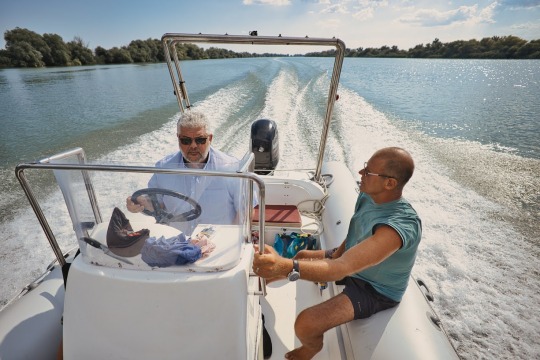
"Most humans live in hydrographic basins, because water is essential, but we are exhausting the systems that give us life", explains Prof. Adrian Stanica on LifeWatch ERIC's 'A Window on Science' podcast...
We were absolutely delighted to be asked by Julian Kenny of LifeWatch ERIC to participate on their 'A Window on Science' podcast, which has received over 2000 plays so far. The series started in March 2022 to accessibly engage listeners interested in biodiveristy and ecosystems research. Informal conversations explain the sometimes-opaque language of science, one item at a time. The resultant science-based information is then more relevant to policy-makers, politicians or anyone concerned about climate change.
In this episode, Adrian explains about the origins of DANUBIUS-RI and how over the last 13 years we have developed a pan-European initiative that delivers sustainable solutions for complex River-Sea Systems. These 'transitional' zones, areas where the marine water and freshwater meet are places where complex scientific processes are occurring. Incredibly, these are also some of the least studied areas in natural science. Restricted water flows and increased sedimentation threaten natural habitats, with loss of biodiversity, weakening the ecosystem services and functions. DANUBIUS-RI provies a range of services that combine Earth Observation (EO), in-situ measurements with modelling data that provides decision-makers with the understanding to tackle the dilemmas we all face.

Image: DANUBIUS-RI brings together the expertise to tackle the challenges of 'Transitional' zones. © DANUBIUS-IP
Listen to more science podcasts from Lifewatch here on their channel.
0 notes
Text
Birds ‘Directed’ Mastercard’s Short Film Celebrating the Biodiversity of the Danube
New Post has been published on https://petnews2day.com/pet-news/bird-news/birds-directed-mastercards-short-film-celebrating-the-biodiversity-of-the-danube/
Birds ‘Directed’ Mastercard’s Short Film Celebrating the Biodiversity of the Danube
The Danube Delta is an area with impressive biodiversity, hosting over 330 of the 380 bird species that can be found in Romania. But the accelerated and unsustainable development in the area endangers the number of birds year after year.
Mastercard partnered with OTP Bank to create Birdville, a short film directed by birds in partnership with MRM Romania and McCann Bucharest.
youtube
There are a multitude of documentaries in which people tell stories about the fauna of the Delta. But to capture its true beauty, unspoiled by human presence, this time the birds took over as directors. For four days, four cameras equipped with motion sensors were placed in key areas of the Delta, chosen together with Iliuță Goean, tourist guide of Descopera Delta Dunarii to capture the activity of the birds.
The birds decided when it was time for ‘action’ and when the scene cut because the cameras started recording only when they were in proximity and stopped after 10 seconds of inactivity.
Nine species of birds were spotted during filming, which began before sunrise and ended after sundown. They included the Common Pelican, the Small Cormorant, the Common Tern, Grey Heron and the Black-Headed Gull.
Birdville aims to become an awareness and education platform to promote conservation in the region.
youtube
On offline screens, the movie displays a QR code that leads people to birdville.ro website, where people can find out more information about the steps they can take to get involved in the biodiveristy conservation.
”The Danube Delta is among the last truly wild places in Romania, where birds still live without being disturbed by human intervention,” said Simona Suman, executive creative director MRM Romania. “That’s what we wanted to capture, so we thought of a piece of content where our intervention would be minimal, for the viewers to see the birds like they’ve never seen them before, in total freedom. But this is about to change if people aren’t aware of the impact of their actions as tourists, inhabitants, or business developers in the Delta.”
The film launched during Anonimul International Independent Movie Festival in Sfântu Gheorghe, Danube Delta. It will also be entered in the competitions of other international movie festivals.
Agency / Creative
Company name: McCann Worldgroup Romania
Executive Creative Director: Simona Suman
Content Producer: Ionut Lutzu Cojocaru
Art Director: Alina Calfa
Copywriter: Cosmina Chelariu
Art Director: Bogdan Strete
Business Director: Carmen Marin
Business Director: Andreea Sofrone
Account Manager: Iulia Miclos
Account Manager: Valentin Coman
Account Manager: Ana-Maria Tiganus
Producer: Cosmin Hritcu
0 notes
Text
Monitoring and Evaluation Officer – Uganda Biodiversity Fund
Monitoring and Evaluation Officer – Uganda Biodiversity Fund
UGANDA BIODIVERISTY FUND
JOB OPPORTUNITY
Job Title : Monitoring and Evaluation Officer (MEO)
Reports to : Programs Manager
Responsible for : None
Department : Programs
Background
Uganda Biodiversity Fund (UBF) is seeking to recruit a highly self-motivated individual for the position of Program Officer. UBF, is a Conservation Trust Fund with a Mission to…

View On WordPress
0 notes
Photo

Biodiversity Development Assessment Report (BDAR)
Anderson Environmental Provides-. Biodiversity Development Assessment Report (BDAR) Services in Australia. Explore in detail at: https://andenviro.com.au/our-services/biodiversity-development-assessment-report-bdar-biodiveristy-assessment-method-assessors-bam/ Call us at 1300-302-507 & Get In Touch : https://andenviro.com.au/contacts/
1 note
·
View note
Photo
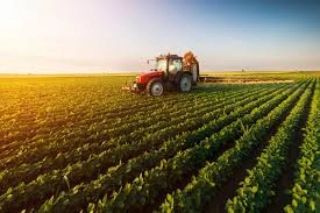
Industrial Agriculture - A Threat to Biodiversity Agricultural production has changed drastically since the early days of human civilization. The domestication of plants and animals led to the development of settled societies and the rise of civilizations. With the industrial revolution, came an even greater change in how we produce food. Large-scale factory farms now dominate the agricultural landscape. These operations have many negative impacts on the environment, including a significant threat to biodiversity. The loss of biodiversity is one of the most serious environmental problems we face today. It is caused by a variety of factors, including habitat loss, pollution, and climate change. However, one of the most significant drivers of biodiversity loss is industrial agriculture. Factory farms are large-scale operations that use intensive methods to raise animals for food. These methods include confining animals in small spaces, using hormones and antibiotics to promote growth, and feeding them a diet of genetically-modified grains. Factory farms generate a lot of waste, which can pollute air and water sources. They also require large amounts of land, leading to habitat destruction. The impact of industrial agriculture on biodiversity is evident in both terrestrial and aquatic ecosystems. On land, the conversion of natural habitats to cropland and pasture is a major driver of habitat loss. This is particularly true in tropical regions, where rainforests are being cleared at an alarming rate to make way for soybean and palm oil plantations. In freshwater systems, factory farms are responsible for polluting rivers and lakes with nutrients and chemicals from animal waste. This can lead to algal blooms that deplete oxygen levels and kill fish and other aquatic creatures. The negative impacts of industrial agriculture on biodiversity are clear. This type of agriculture threatens many different species of plants and animals, as well as the ecosystems they depend on. We must take action to reduce the impact of industrial agriculture on our planet's biodiveristy before it's too late. #industrialagriculture #climatechange #biodiversity (at ecoplanetfarm) https://www.instagram.com/p/Cjos7xwpsey/?igshid=NGJjMDIxMWI=
0 notes
Text

Bug hotel.
Design: Rodrigo Pantoja
@rodrigopantojacalderon
Renderings: Yair Reyes
Area: 2m2
Insects are a necessary link in an ecosystem. Its function is vital; They help to fertilize flowers and plants, and also to oxygenate and fertilizes the soil.
Bug hotels are artificial shelters - created from natural materials - for pollinating insects and pest controllers.
These structures promote the accommodation and reproduction of bees, spiders, ladybugs, lacewing, butterflies, and dragonflies, helping the ecological balance, food security, and biodiversity of the planet.
#foodsecurity #seguridadalimentaria #bughotel #bichos #insectos #arquitectura #arquitecturaecologica #sustainablearchitecture #regenerativearchitecture #mexicanarchitecture #arquitecturaregenerativa #medioambiente #biodiversidad #biodiveristy #evolabarquitectura #divisare #archdaily #arch_grap
#architecture_hunter
#amazingarchitecture
#divisare
#arch_more
#arch_grap
#arch_only
#actofmapping
#architects
#archilovers
#thebna
#evolabarquitectura
#architecture
#mexicanarchitecture
#mexicanarchitects
#architecture_hunter
#archivaluemx
1 note
·
View note
Photo
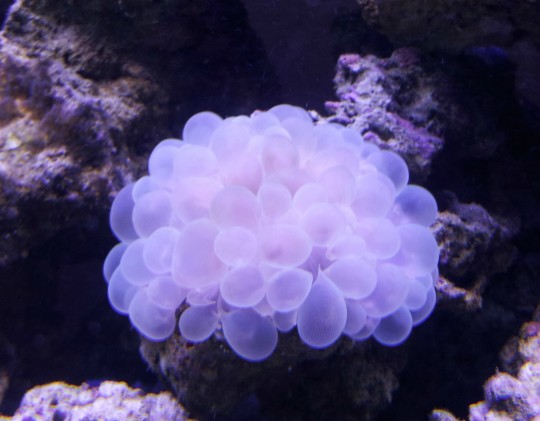
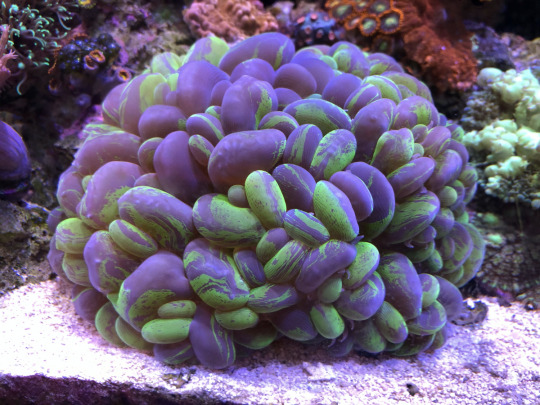
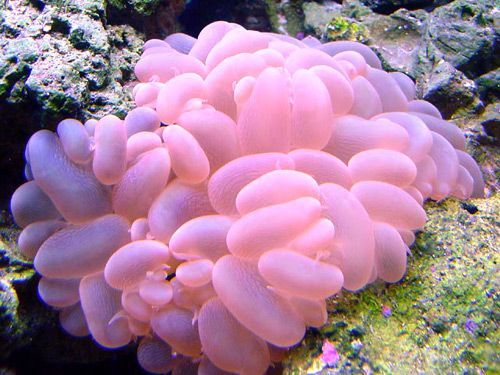
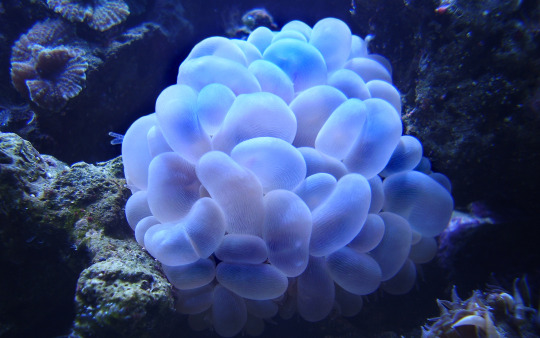
Plerogyra sinuosa or Bubble Coral
Appropriately named, the bubble coral is covered in bubble-like polyps that are filled with water; these can develop in different colors and shapes. The polyps also contain zooxanthellae, causing the bubbles to expand during the day and retract at night.
#marine biology#marine ecology#marine bio#marine life#marine wildlife#marine creatures#sea creatures#marine ecosystem#biodiveristy#coral#bubble coral#wildlife#animals#science#biology#ecololgy#zoology#icthyology#oceans#ocean#photos#animal facts#coral facts#sea life#science facts#facts#fun facts#environment#environmental science#nature
5K notes
·
View notes